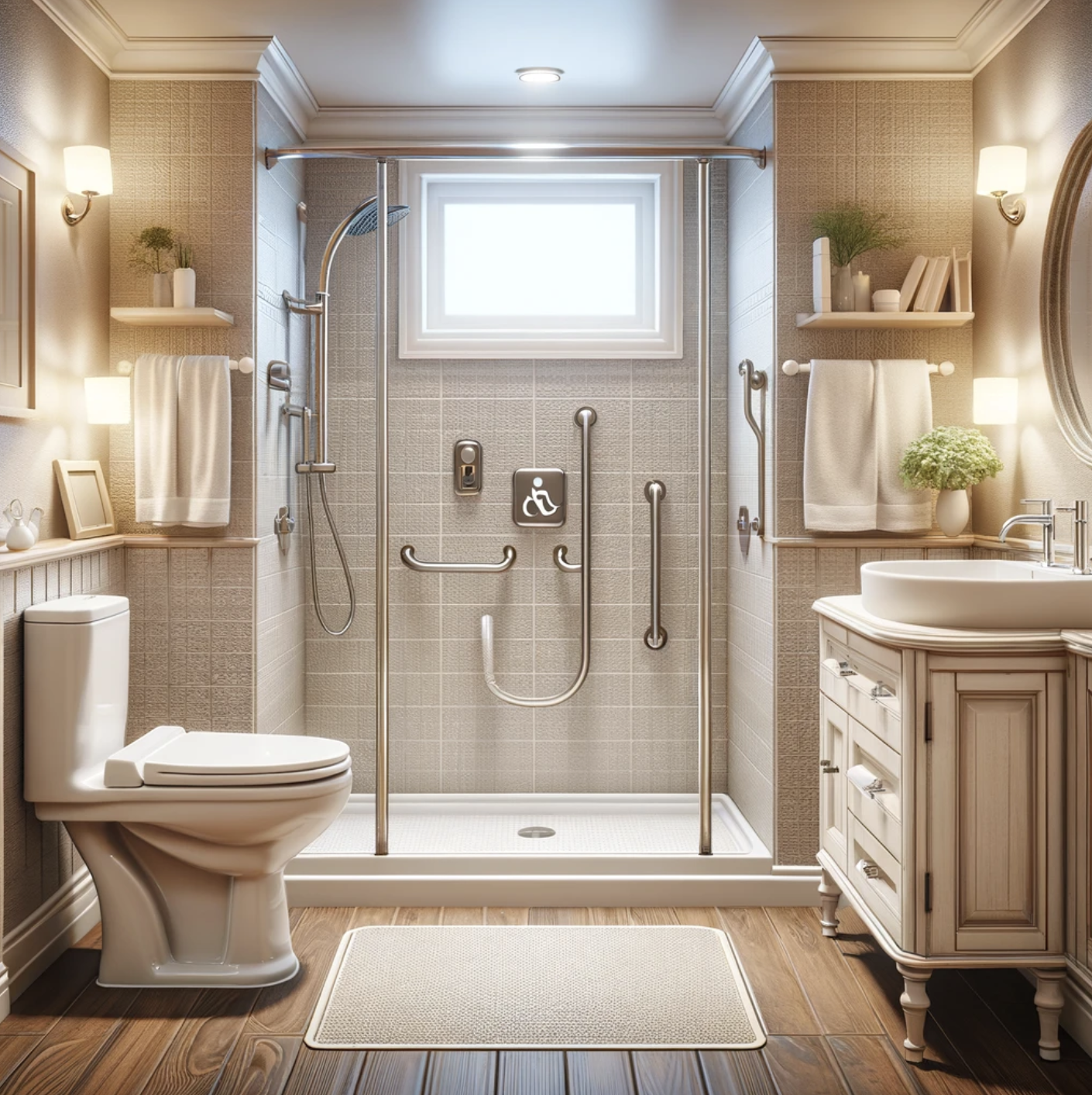Table of Contents
A modern and bright bathroom with a walk-in shower and a stand-up aid for the toilet
Find out more about age-appropriate bathrooms, the conditions for remodelling, costs and available grants to make life more comfortable in old age.
The bathroom is one of the most important rooms in a house or flat: it’s where you can relax and practise important hygiene measures at the same time. What many people don’t realise at a young age is that as we get older, simple things like personal hygiene or going to the toilet become increasingly difficult to manage. Getting out of the bathtub in your own home becomes an energy-sapping endeavour sooner than you think and the daily shower is no longer as easy.
If the elderly person is also reliant on walking aids or a wheelchair, a barrier-free bathroom is a must. There are many ways to remodel a bathroom in an age-appropriate yet stylish way. In the following article, you can find out what an age-appropriate bathroom must have, what you should consider when remodelling and which grants you can apply for to finance it.
Age is no barrier to fun and excitement! In fact, older people are increasingly experiencing the thrill of playing slots and enjoying the colourful world of online casinos. Thanks to the convenience of virtual platforms, there’s no need to leave home to get caught up in the excitement of spinning the reels and chasing jackpots at Richard online casino.
It’s a testament to the timeless appeal of gambling that proves that the joy of gaming has no age limit. So, whether you’re a seasoned enthusiast or a newcomer to the world of slots, adventure awaits you in the world of online casinos.
How People with Disabilities Benefit from Age-Appropriate Bathrooms!
An accessible bathroom offers people with disabilities the comfort of being able to carry out their personal hygiene independently or with the support of a helping hand such as a family member or carer for as long as possible.
Falls can also be prevented with the right remodelling measures, such as the installation of a level-access shower. This means greater safety and quality of life for people in need of assistance.
What Conditions Must a Bathroom Suitable for Senior Citizens Fulfil?
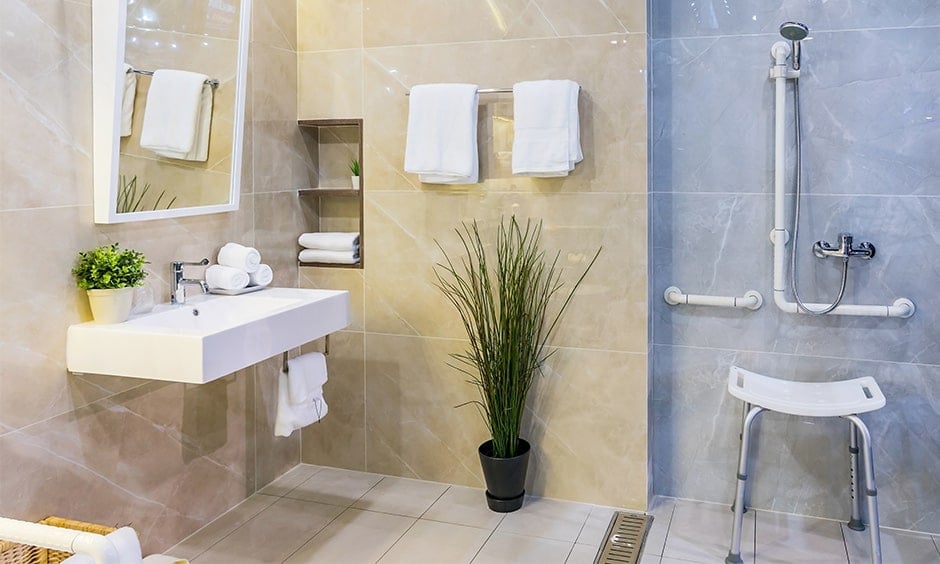
People often find it difficult to accept help from others, especially when it comes to hygiene. This is more than understandable: in situations like these, senior citizens feel as if they are giving up the last remnants of their independence and are dependent on others for the simplest things in everyday life. The solution: an age-appropriate bathroom that removes barriers, provides more freedom of movement and thus makes independent hygiene possible again.
In most cases, only minor bathroom modifications need to be made and care aids used. It is therefore often sufficient to convert an existing bathroom into a low-barrier bathroom. In direct comparison with a barrier-free bathroom, which is bound by legal requirements (DIN standard 18040-2), planning is far less complicated. The bathroom conversion is also less expensive. The following options are available:
Non-Slip Floors
To ensure that safety is a priority in an age-appropriate bathroom, the flooring material must be non-slip. After all, how quickly can a person in need of care lose their footing on a slippery floor or the 24-hour carer injure themselves and the person being cared for at the same time during daily assistance in the bathroom due to slippery flooring?
The best solution: floor tiles in an accessible bathroom should have a slip resistance rating of R9 or R10. This can prevent unnecessary falls in the bathroom.
An Age-Appropriate Bathroom Washbasin
The washbasin is an important piece of equipment in the bathroom. Accordingly, it should be given particular attention during a remodelling project. There are two design options to choose from: A height-adjustable washbasin or the installation of a washbasin that you can comfortably drive under with a wheelchair.
The first option is particularly suitable for bathrooms that are used by several people. This gives you the option of raising or lowering the wash basin to suit your needs. The second option is less expensive, but still provides more freedom of movement in the bathroom.
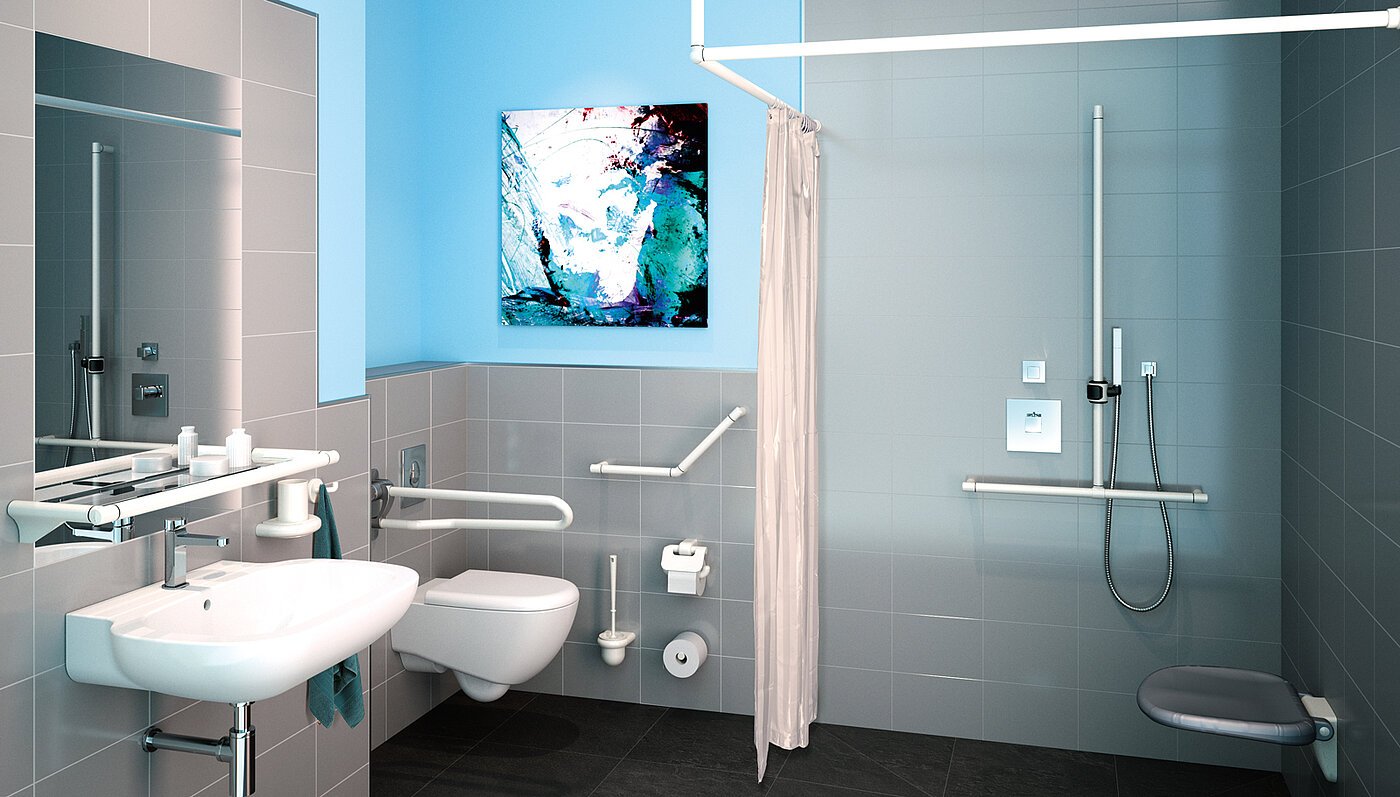
The choice of bathroom mirror should also be considered. It must be designed in such a way that every person living in the household can take a look at their reflection. Good tip: Longer mirror surfaces are a good option for people in need of assistance who are in a wheelchair and for people who carry out their care routine standing up.
The fittings should also be age-appropriate. Bear in mind that the motor skills of older people and those in need of assistance no longer function as optimally as they do in young people. Accordingly, they should be easy to operate. With some models, it is even possible to limit the water temperature to a certain number of degrees. This can prevent burns.
A Level-Access Shower
Installing a level-access shower removes an important risk factor that can cause a fall: the shower threshold. After the conversion, senior citizens can comfortably enter the shower without having to worry about getting stuck and falling.
For people who are dependent on a wheelchair in everyday life, a barrier-free shower also means more comfort and makes the daily hygiene and care ritual easier.
Good to know: You don’t have to worry about flooding in the bathroom with a level-access shower. The shower floor is designed during the conversion so that it sinks slightly towards the drain and the water can drain away easily, just like in a conventional shower.
The Age-Appropriate Bathtub
Older people who enjoyed the benefits of a bubble bath in their own bathroom when they were young do not want to miss out on this privilege in old age. The solution: an age-appropriate seated bath. The advantages are obvious. Bathtubs like these have a built-in door that makes it safe to get in and a raised seat that makes it easier to get out and also guarantees a comfortable sitting position.
If several people live in the same household and use the same bathroom, the current bath can also be fitted with a watertight access door. Here too, accessibility is created for the family member in need of assistance and the comfort of the beloved bubble bath can continue to be enjoyed safely.
The Senior Toilet
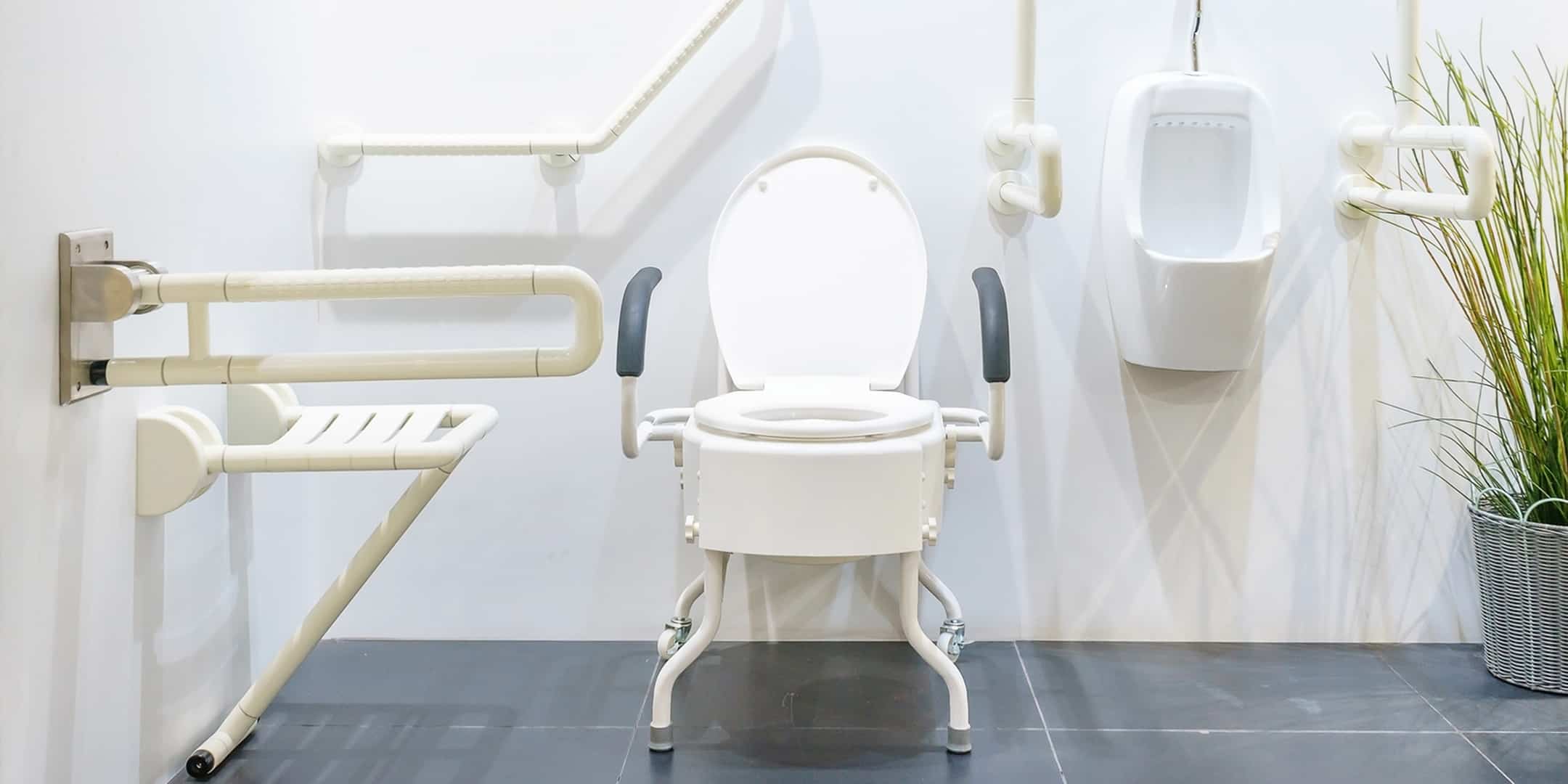
The fact is: an adult visits the toilet around six times a day. Even more often in old age. To ensure that going to the toilet does not become a strenuous marathon for your relatives and can be done without fear of falling, you should implement the following tips when remodelling the bathroom:
To ensure that the toilet is wheelchair accessible, there should be enough space next to the toilet.
Grab rails to the right and left of the toilet make it easier to sit down and stand up. This also ensures greater safety and can prevent falls.
A raised toilet makes it easier for people with reduced mobility to use the toilet.
Depending on the need, the button for flushing the toilet should be positioned higher or lower in an age-appropriate bathroom.
Accessories & Aids
Depending on the situation, an age-appropriate bathroom does not always have to be renovated. In some cases, it is also sufficient to integrate certain aids in the bathroom for the safety of your loved ones. Because only then can older people, who no longer find everyday tasks so easy, master the challenge of independent everyday life in their own home.
Shower chairs & folding shower seats: Shower chairs that have non-slip legs and can be moved flexibly or folding seats that are attached to the shower wall are the perfect addition to a barrier-free shower. They make daily hygiene measures easier for senior citizens and ensure greater safety in the bathroom.
Safety handles: Assist and grab rails grant your relatives safe navigation in an accessible bathroom and make their care routine and trips to the toilet easier. They can be used next to the toilet, in the shower, the bathtub or occasionally on the walls, for example.
The fact is: Older people can lose their footing, especially in the shower or when standing up in the bath. Safety handles are particularly important in these areas of the bathroom! If you are thinking about a complete renovation, you can use the services of a professional remodelling company. Thanks to their years of experience, the experts can give you helpful tips and support you with the planning and installation.
Aids such as these can be installed without great effort and high costs. However, make sure they are installed safely!
What Do You Need to Consider when Renovating a Bathroom in A Rented Flat?
Unlike owners, tenants must inform the landlord about the project and obtain authorisation for the bathroom renovation. Good to know: According to Section 554 of the German Civil Code (BGB), if an age-appropriate remodelling makes everyday life easier for the person in need of care, consent must be given.
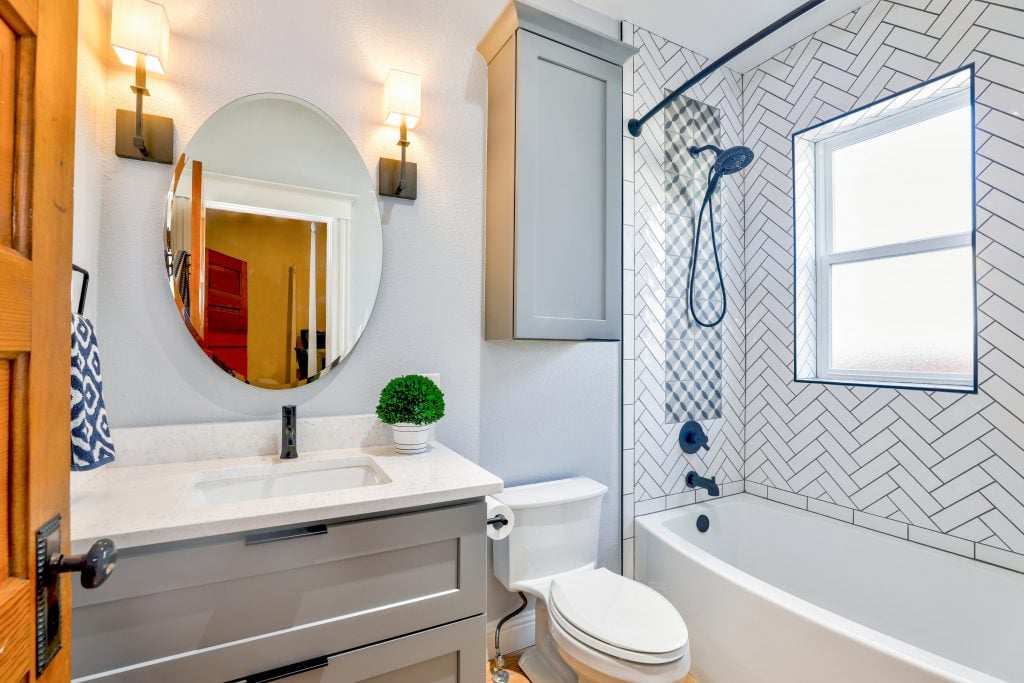
However, if your landlord is not so enthusiastic about your plans and is reluctant to share the costs, you can inform them about the advantages of a barrier-free bathroom conversion. Barrier-free flats or bathrooms are now considered a high standard and increase the value of a property many times over!
Regardless of whether you opt for an adapted bathroom remodelling or a complete bathroom renovation: In order to have an age-appropriate bathroom conversion implemented, there are various steps that need to be carried out by various professionals.
Once you have decided on the right service partner with the best offer for you after a detailed consultation and cost agreement, nothing stands in the way of the “age-appropriate bathroom” project. The bathroom renovation process may vary depending on the spatial conditions and the project. You will be faced with the following steps:
1. the Old Bathroom Furnishings Are Removed
Depending on the scope of the bathroom renovation, the first step is to remove some or all of the old bathroom furnishings and then dispose of them correctly. If you have opted for a non-slip floor for greater safety in the bathroom, this will also be removed along with the substrate. Good to know: It can get a bit dusty during this construction phase!
2. the Bathroom Remodelling
If you have opted for a barrier-free bathroom, the walls are now moved, every obstacle removed and, if necessary, new electrical cables pulled.
The same applies to water pipes and heating technology: if new pipes or lines need to be laid or replaced due to the age or location of the adapted sanitaryware, this labour-intensive process is carried out at this stage. Good tip: The door to the bathroom must be able to open outwards for safety reasons!
3. the Installation
All the new sanitary facilities are now installed, including the barrier-free shower, bathtub, age-appropriate washbasin and a low-barrier toilet. In order to offer your loved ones additional safety, various aids such as grab rails can now also be installed.
Last but not least, it’s all about the visual beauty of the brand new bathroom: if desired, mirrors can be fitted, the joints sealed, sockets installed in the desired location and lights fitted. Important: Make sure that the light sources are positioned in such a way that they guide the person in need of help and do not dazzle their eyes.

